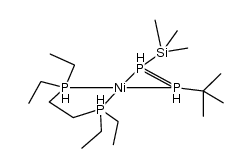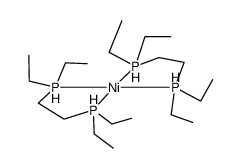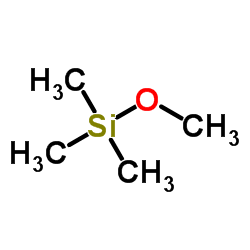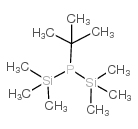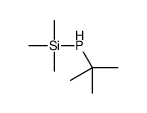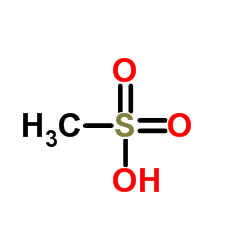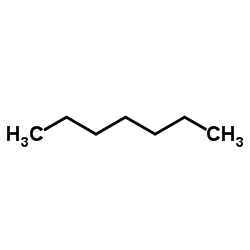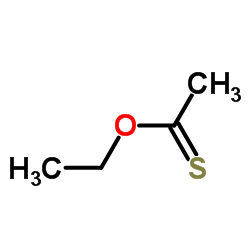tert-butylphosphane

tert-butylphosphane structure
|
Common Name | tert-butylphosphane | ||
|---|---|---|---|---|
| CAS Number | 2501-94-2 | Molecular Weight | 90.10390 | |
| Density | N/A | Boiling Point | 73.3ºC at 760 mmHg | |
| Molecular Formula | C4H11P | Melting Point | 4ºC | |
| MSDS | N/A | Flash Point | N/A | |
| Name | tert-butylphosphane |
|---|---|
| Synonym | More Synonyms |
| Boiling Point | 73.3ºC at 760 mmHg |
|---|---|
| Melting Point | 4ºC |
| Molecular Formula | C4H11P |
| Molecular Weight | 90.10390 |
| Exact Mass | 90.05980 |
| PSA | 13.59000 |
| LogP | 1.66000 |
| Vapour Pressure | 125mmHg at 25°C |
|
Section 1: Product Identification Chemical Name:t-Butylphosphine, min. 95% TBP CAS Registry Number:2501-94-2 Formula:(C4H9)PH2 EINECS Number:none Chemical Family:organophosphorus ligand Synonym:tert-Butylphosphane; (1,1-dimethylethyl)phosphane; 1,1-dimethylethylphosphine
Section 2: Composition and Information on Ingredients IngredientCAS NumberPercentACGIH (TWA)OSHA (PEL) Title compound2501-94-2100%no datano data Section 3: Hazards Identification Material has an intensely pungent odor. Toxic by inhalation, in contact with skin and if swallowed. Inhalation of Emergency Overview: vapors may lead to headache and dizziness. Irritating to skin, eyes and respiratory tract. Primary Routes of Exposure:Ingestion, skin, inhalation Eye Contact:Causes mild to severe irritation of the eyes. Skin Contact:Liquid may burst into flame in air causing thermal burns to skin. Toxic by inhalation. Inhalation may lead to headaches and dizziness. Irritating to nose and mucous Inhalation: membranes. Ingestion:Toxic if swallowed. May cause vomiting and diarrhea. Acute Health Affects:Toxic by inhalation, in contact with skin and if swallowed. Irritating to skin, eyes and respiratory tract. Chronic Health Affects:No information on long-term chronic effects. NTP:No IARC:No OSHA:No SECTION 4: First Aid Measures Immediately flush the eyes with copious amounts of water for at least 10-15 minutes. A victim may need Eye Exposure: assistance in keeping their eye lids open. Get immediate medical attention. Wash the affected area with water. Remove contaminated clothes if necessary. Seek medical assistance if Skin Exposure: irritation persists. Remove the victim to fresh air. Closely monitor the victim for signs of respiratory problems, such as difficulty Inhalation: in breathing, coughing, wheezing, or pain. In such cases seek immediate medical assistance. Seek medical attention immediately. Keep the victim calm. Give the victim water (only if conscious). Induce Ingestion: vomiting only if directed by medical personnel. SECTION 5: Fire Fighting Measures Flash Point:no data Autoignition Temperature:pyrophoric Explosion Limits:no data Extinguishing Medium:carbon dioxide, dry powder or foam If this product is involved in a fire, fire fighters should be equipped with a NIOSH approved positive pressure Special Fire Fighting Procedures: self-contained breathing apparatus and full protective clothing. Hazardous Combustion andIf involved in a fire, this material may emit toxic organic fumes and vapors of phosphorus pentoxide. Decomposion Products: Material is pyrophoric. May spontaneously ignite if exposed to air, especially when in contact with organic Unusual Fire or Explosion Hazards: matter. SECTION 6: Accidental Release Measures Small spills can be mixed with vermiculite or other suitable adsorbents. Spillage in areas not adequately Spill and Leak Procedures:ventilated will require an evacuation site. Material may spontaneously ignite. Avoid static electricity. Emergency response teams will require self-contained breathing apparatus. SECTION 7: Handling and Storage Handling and Storage:Material must be handled and stored under an inert atmosphere of nitrogen or argon. SECTION 8: Exposure Controls and Personal Protection Eye Protection:Always wear approved safety glasses when handling a chemical substance in the laboratory. Skin Protection:Wear protective clothing and gloves. Ventilation:Handle the material in an efficient fume hood. If ventilation is not available a respirator should be worn. The use of respirators requires a Respirator Respirator: Protection Program to be in compliance with 29 CFR 1910.134. Ventilation:Handle the material in an efficient fume hood. Additional Protection:No additional protection required. SECTION 9: Physical and Chemical Properties Color and Form:colorless liquid Molecular Weight:90.1 Melting Point:no data Boiling Point:54C° Vapor Pressure:no data Specific Gravity:0.7 Odor:intensely pungent odor Solubility in Water:insoluble SECTION 10: Stability and Reactivity Stability:air sensitive liquid Hazardous Polymerization:no hazardous polymerization Conditions to Avoid:contact with air. Material may spontaneously ignite on exposure to oxygen. Incompatibility:oxidizing agents and halogens Decomposition Products:carbon monoxide, carbon dioxide, phosphorus oxides and organic fumes SECTION 11: Toxicological Information RTECS Data:No information available in the RTECS files. Carcinogenic Effects:no data Mutagenic Effects:no data Tetratogenic Effects:no data SECTION 12: Ecological Information Ecological Information:No information available SECTION 13: Disposal Considerations Disposal:Dispose of according to local, state and federal regulations. SECTION 14: Transportation Shipping Name (CFR):Pyrophoric liquids, Organic, N.O.S. Hazard Class (CFR):4.2 Additional Hazard Class (CFR):NA Packaging Group (CFR):I UN ID Number (CFR):UN# 2845 Shipping Name (IATA):Forbidden Hazard Class (IATA):NA Additional Hazard Class (IATA):NA Packaging Group (IATA):NA UN ID Number (IATA):UN# 2845 SECTION 15: Regulatory Information TSCA:Listed in the TSCA inventory SARA (Title 313):Title compound not listed Second Ingredient:none SECTION 16 - ADDITIONAL INFORMATION N/A |
|
~82% 
tert-butylphosphane CAS#:2501-94-2 |
| Literature: Rohm and Haas Electronic Materials, L.L.C. Patent: US2005/33073 A1, 2005 ; Location in patent: Page 6 ; |
|
~63% 
tert-butylphosphane CAS#:2501-94-2 |
| Literature: Krolevets, A. A.; Antipova, V. V.; Popov, A. G.; Adamov, A. V.; Martynov, I. V. Bulletin of the Academy of Sciences of the USSR, Division of Chemical Science (English Translation), 1987 , vol. 36, # 9 p. 1989 Izvestiya Akademii Nauk SSSR, Seriya Khimicheskaya, 1987 , # 9 p. 2138 |
|
~36% 
tert-butylphosphane CAS#:2501-94-2 |
| Literature: Atwood, David A.; Cowley, Alan H.; Harris, Paul R.; Jones, Richard A.; Koschmieder, Stefan U.; Nunn, Christine M. Journal of Organometallic Chemistry, 1993 , vol. 449, # 1-2 p. 61 - 67 |
|
~%
Detail
|
| Literature: Schaefer, H.; Binder, D. Zeitschrift fuer Anorganische und Allgemeine Chemie, 1988 , vol. 557, p. 45 - 58 |
|
~% 
tert-butylphosphane CAS#:2501-94-2 |
| Literature: Schaefer, H.; Binder, D. Zeitschrift fuer Anorganische und Allgemeine Chemie, 1988 , vol. 557, p. 45 - 58 |
|
~% 
tert-butylphosphane CAS#:2501-94-2 |
| Literature: Veits, Yu. A.; Nasonova, N. S.; Karlstedt, N. B.; Neganova, E. G.; Beletskaya, I. P. Russian Journal of Organic Chemistry, 1995 , vol. 31, # 2 p. 156 - 158 Zhurnal Organicheskoi Khimii, 1995 , vol. 31, # 2 p. 179 - 182 |
|
~% 
tert-butylphosphane CAS#:2501-94-2 |
| Literature: Standard Oil Co. of Indiana Patent: US2584112 , 1950 ; Full Text Show Details Hoff; Hill Journal of Organic Chemistry, 1959 , vol. 24, p. 356,358 |
|
~23%
Detail
|
| Literature: Sinyashin, O. G.; Gorshunov, I. Yu.; Chernov, A. N.; Il'yasov, A. V.; Batyeva, E. S.; Pudovik, A. N. J. Gen. Chem. USSR (Engl. Transl.), 1988 , vol. 58, # 10 p. 2206 - 2212,1965 - 1970 |
| dimethyl phosphino ethane |
| tert-C4H9PH2 |
| mono-t-butyl-phosphine |
| mono-1,1-dimethylethylphosphine |
| tertiary butyl phosphine |
| Tert-butyl phosphine |



